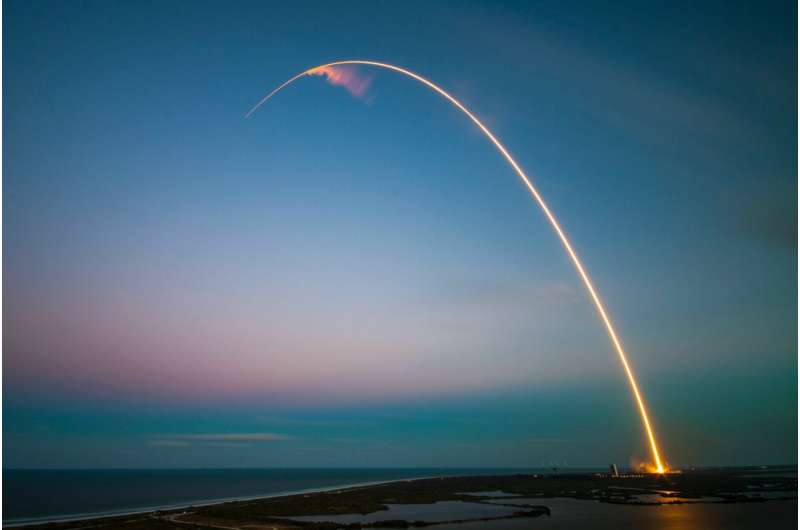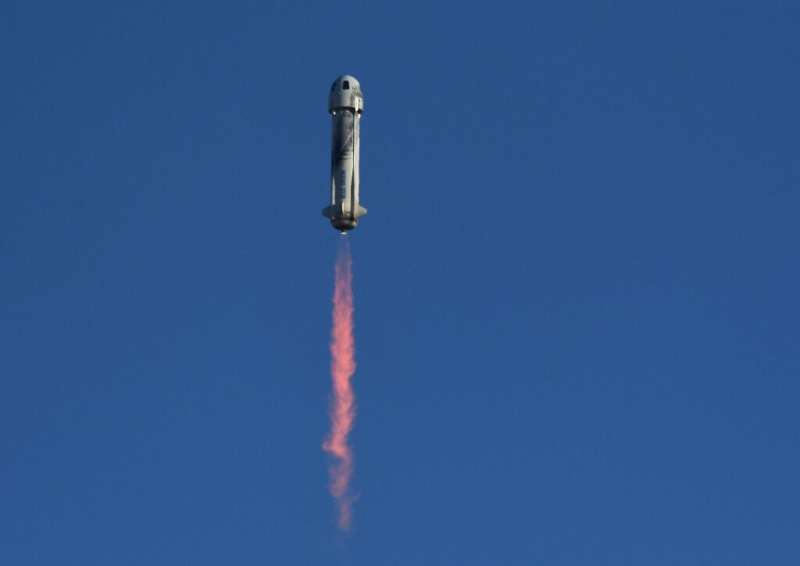
Copernical Team
Artemis 1 becomes cultural, educational time capsule for trip around moon
 When NASA's Orion spacecraft travels beyond the Moon during Artemis I, boosted by the Space Launch System rocket on its maiden voyage, the spacecraft will carry a host of mementos for educational engagement and posterity in the Official Flight Kit.
NASA spacecraft, both crewed and uncrewed, have carried mementos from Earth since the 1960s. NASA's Voyager probe carried with it a gold record
When NASA's Orion spacecraft travels beyond the Moon during Artemis I, boosted by the Space Launch System rocket on its maiden voyage, the spacecraft will carry a host of mementos for educational engagement and posterity in the Official Flight Kit.
NASA spacecraft, both crewed and uncrewed, have carried mementos from Earth since the 1960s. NASA's Voyager probe carried with it a gold record Additional Artemis I test objectives to provide added confidence in capabilities
 During Artemis I, NASA plans to accomplish several primary objectives, including demonstrating the performance of the Orion spacecraft's heat shield from lunar return velocities, demonstrating operations and facilities during all mission phases from launch countdown through recovery, and retrieving the crew module for post-flight analysis.
As the first integrated flight of the Space Launch
During Artemis I, NASA plans to accomplish several primary objectives, including demonstrating the performance of the Orion spacecraft's heat shield from lunar return velocities, demonstrating operations and facilities during all mission phases from launch countdown through recovery, and retrieving the crew module for post-flight analysis.
As the first integrated flight of the Space Launch ISS tests organisms, materials in space
 Space may look empty, but it contains extreme temperatures, high levels of background radiation, micrometeoroids, and the unfiltered glare of the Sun. In addition, materials and equipment on the outside of the International Space Station are exposed to atomic oxygen (AO) and other charged particles as it orbits the Earth at the very edge of our atmosphere. Only the hardiest materials, equipment,
Space may look empty, but it contains extreme temperatures, high levels of background radiation, micrometeoroids, and the unfiltered glare of the Sun. In addition, materials and equipment on the outside of the International Space Station are exposed to atomic oxygen (AO) and other charged particles as it orbits the Earth at the very edge of our atmosphere. Only the hardiest materials, equipment, 3 in Blue Origin crew set new world records aboard New Shepard spaceflight
 Private space company Blue Origin completed its sixth private human spaceflight on Thursday, carrying an American woman and two others who set a new Guinness World Record on the trip.
Blue Origin's New Shepard N-22 mission lifted off Thursday morning from Launch Site One in West Texas carrying six passengers on the space-tourism flight.
Onboard were Sara Sabry, Steve Young, Coby
Private space company Blue Origin completed its sixth private human spaceflight on Thursday, carrying an American woman and two others who set a new Guinness World Record on the trip.
Blue Origin's New Shepard N-22 mission lifted off Thursday morning from Launch Site One in West Texas carrying six passengers on the space-tourism flight.
Onboard were Sara Sabry, Steve Young, Coby Blue Origin sends first Egyptian and Portuguese nationals to space
 Jeff Bezos' Blue Origin on Thursday launched six people to space, including the first from Egypt and Portugal, on the company's sixth crewed flight.
Mission "N-22" saw the New Shepard suborbital rocket blast off around 8:58 am local time (1358 GMT) from Blue's base in the west Texas desert.
The autonomous, re-usable vehicle sent its crew capsule soaring above the Karman line, the intern
Jeff Bezos' Blue Origin on Thursday launched six people to space, including the first from Egypt and Portugal, on the company's sixth crewed flight.
Mission "N-22" saw the New Shepard suborbital rocket blast off around 8:58 am local time (1358 GMT) from Blue's base in the west Texas desert.
The autonomous, re-usable vehicle sent its crew capsule soaring above the Karman line, the intern South Korea's first lunar orbiter launched by SpaceX
 South Korea's first lunar orbiter successfully launched on a year-long mission to observe the Moon, Seoul said Friday, with the payload including a new disruption-tolerant network for sending data from space.
Danuri - a portmanteau of the Korean words for "Moon" and "enjoy" - was on a Falcon 9 rocket launched from Cape Canaveral in Florida by Elon Musk's aerospace company SpaceX. It aims t
South Korea's first lunar orbiter successfully launched on a year-long mission to observe the Moon, Seoul said Friday, with the payload including a new disruption-tolerant network for sending data from space.
Danuri - a portmanteau of the Korean words for "Moon" and "enjoy" - was on a Falcon 9 rocket launched from Cape Canaveral in Florida by Elon Musk's aerospace company SpaceX. It aims t Beyond Artemis I—NASA plots cheaper rocket rollout while Congress calls for more flights

NASA has yet to get its next-generation moon rocket off the ground, but this week announced a shift in how it plans to pay for future launches while also falling under a new directive from Congress to increase the number of flights each year.
Artemis I, a combination of the Space Launch System rocket and Orion capsule, is set to roll out from Kennedy Space Center's Vehicle Assembly Building on Aug. 18 to Launch Pad 39-B ahead of a potential liftoff as early as Aug. 29. The uncrewed test flight will send Orion on a mission that could last up to 42 days traveling more than 1 million miles including several orbits around the moon.
The primary goal is to sign off on Orion's ability to support crew for future missions, including testing a heat shield that can endure the stresses of an intense re-entry.
"Orion will come home faster and hotter than any spacecraft has before," said NASA Administrator Bill Nelson during a press conference Wednesday. "It's going to hit the Earth's atmosphere at 32 times the speed of sound.
Blue Origin sends first Egyptian and Portugese nationals to space

Jeff Bezos' Blue Origin on Thursday launched six people to space, including the first from Egypt and Portugal, on the company's sixth crewed flight.
Mission "N-22" saw the New Shepard suborbital rocket blast off around 8:58 am local time (1358 GMT) from Blue's base in the west Texas desert.
The autonomous, re-usable vehicle sent its crew capsule soaring above the Karman line, the internationally recognized space boundary, 62 miles (100 kilometers) above sea level.
"I'm floating!" a crew mate could be heard saying on a livestream, as the capsule coasted to its highest point and the passengers experienced a few minutes of weightlessness.
Both the rocket and capsule separately returned to the base—the latter using giant parachutes—completing the mission around 11 minutes after lift-off.
The final frontier? Just a slice of Spanish sausage

A red ball of spicy fire with luminous patches glowing menacingly against a black background.
This, prominent French scientist Etienne Klein declared, was the latest astonishing picture taken by the James Webb Space Telescope of Proxima Centauri, the closest star to our Sun.
Fellow Twitter users marveled at the details on the picture purportedly taken by the telescope, which has thrilled the world with images of distant galaxies going back to the birth of the universe.
"This level of detail... A new world is revealed every day," he gushed.
But in fact, as Klein later revealed, the picture was not of the intriguing star just over four light-years from the Sun but a far more modest slice of the lip-sizzling Spanish sausage chorizo.
Photo de Proxima du Centaure, l'étoile la plus proche du Soleil, située à 4,2 année-lumière de nous.
Elle a été prise par le JWST.
Ce niveau de détails… Un nouveau monde se dévoile jour après jour.
ESA testing sensor network for smart city navigation

New infrastructure added to ESA’s ESTEC technical centre in the Netherlands is helping to test how tomorrow’s smart cities will operate in practice. The HANSEL system is hosted in ESTEC’s Navigation Laboratory and allows linking to sensors across the site, providing insight into the collective networking and computing needed to get a variety of ‘intelligent elements’ to mesh seamlessly together – what the brain of a future smart city might look like.
